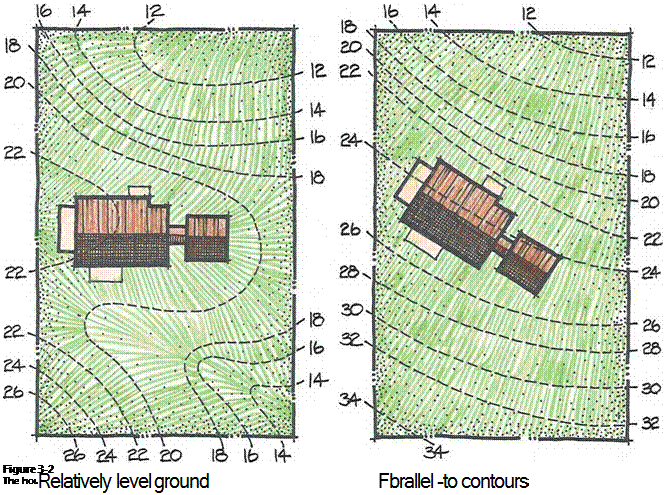Surface water exists on all sites, if only temporarily. During and after a storm, water drains across and through a site seeking low channels and areas to collect. Surface water may be present longer or permanently in the form of wet areas or even wetlands. Some residential sites also adjoin streams, rivers, ponds, or lakes. Surface water in all these forms should be protected to maintain is natural flow, reduce erosion, minimize pollution, and protect aquatic life in the water.
The house, other structures, and paved areas should all be located outside natural drainage ways on a site to escape flooding and avoid negatively affecting the quantity and quality of water flowing through a site (Figure 3—4). Although small drainage ways can be relocated, it is nevertheless disruptive and may require unnecessary grading. Likewise, no structural element should be placed in low areas and wetlands, because these are critical wildlife habitats and places where water percolates into the ground to recharge subsurface water. A vegetative buffer should be established along the edge of all wetlands and water bodies to act as a filter for water draining into them, as shown in Figure 3—5. The vegetative buffer absorbs eroded

soil and pollutants, thus cleansing the water entering into a stream, wetland, or lake. This is especially desirable where water from driveways, pool areas, fertilized lawn areas, and vegetable gardens drains into a water body. A vegetative buffer likewise stabilizes the banks along rivers and streams, helping to minimize erosion. Local and regional environmental regulations should be consulted to determine the depth of the required buffer.



